104-40-5
| Name | 4-nonylphenol |
|---|---|
| Synonyms |
4-Nonylbenzolol
4-Nonyl phenol 4-n-nonylphenol Phenol, 4-nonyl- EINECS 203-199-4 4-Nonylphenol MFCD00002396 |
| Density | 0.9±0.1 g/cm3 |
|---|---|
| Boiling Point | 330.6±11.0 °C at 760 mmHg |
| Melting Point | 43-44°C |
| Molecular Formula | C15H24O |
| Molecular Weight | 220.350 |
| Flash Point | 184.2±9.4 °C |
| Exact Mass | 220.182709 |
| PSA | 20.23000 |
| LogP | 6.19 |
| Vapour Pressure | 0.0±0.7 mmHg at 25°C |
| Index of Refraction | 1.505 |
| Storage condition | APPROX 20°C |
| Stability | Stable. Incompatible with strong oxidizing agents. |
Synonym:p-Nonylphenol Section 2 - COMPOSITION, INFORMATION ON INGREDIENTS
Risk Phrases: 43 53 Section 3 - HAZARDS IDENTIFICATION EMERGENCY OVERVIEW
May cause sensitization by skin contact. May cause long-term adverse effects in the aquatic environment. Potential Health Effects Eye: May cause eye irritation. Skin: May cause skin irritation. May cause skin sensitization, an allergic reaction, which becomes evident upon re-exposure to this material. Ingestion: May cause digestive tract disturbances. May be harmful if swallowed. Inhalation: May cause respiratory tract irritation. Chronic: No information found. Section 4 - FIRST AID MEASURES Eyes: Flush eyes with plenty of water for at least 15 minutes, occasionally lifting the upper and lower eyelids. Get medical aid immediately. Skin: Get medical aid. Immediately flush skin with plenty of water for at least 15 minutes while removing contaminated clothing and shoes. Wash clothing before reuse. Ingestion: If victim is conscious and alert, give 2-4 cupfuls of milk or water. Never give anything by mouth to an unconscious person. Get medical aid immediately. Inhalation: Get medical aid immediately. Remove from exposure and move to fresh air immediately. If not breathing, give artificial respiration. If breathing is difficult, give oxygen. Notes to Physician: Section 5 - FIRE FIGHTING MEASURES General Information: As in any fire, wear a self-contained breathing apparatus in pressure-demand, MSHA/NIOSH (approved or equivalent), and full protective gear. During a fire, irritating and highly toxic gases may be generated by thermal decomposition or combustion. Use water spray to keep fire-exposed containers cool. Containers may explode in the heat of a fire. Extinguishing Media: Use agent most appropriate to extinguish fire. Cool containers with flooding quantities of water until well after fire is out. Use water fog, dry chemical, carbon dioxide or alcohol type foam. Section 6 - ACCIDENTAL RELEASE MEASURES General Information: Use proper personal protective equipment as indicated in Section 8. Spills/Leaks: Absorb spill with inert material (e.g. vermiculite, sand or earth), then place in suitable container. Clean up spills immediately, observing precautions in the Protective Equipment section. Provide ventilation. Section 7 - HANDLING and STORAGE Handling: Wash thoroughly after handling. Remove contaminated clothing and wash before reuse. Use with adequate ventilation. Avoid contact with eyes, skin, and clothing. Avoid ingestion and inhalation. Storage: Keep container closed when not in use. Store in a cool, dry, well-ventilated area away from incompatible substances. Section 8 - EXPOSURE CONTROLS, PERSONAL PROTECTION Engineering Controls: Use process enclosure, local exhaust ventilation, or other engineering controls to control airborne levels. Exposure Limits CAS# 104-40-5: Personal Protective Equipment Eyes: Wear appropriate protective eyeglasses or chemical safety goggles as described by OSHA's eye and face protection regulations in 29 CFR 1910.133 or European Standard EN166. Skin: Wear appropriate protective gloves to prevent skin exposure. Clothing: Wear appropriate protective clothing to minimize contact with skin. Respirators: A respiratory protection program that meets OSHA's 29 CFR 1910.134 and ANSI Z88.2 requirements or European Standard EN 149 must be followed whenever workplace conditions warrant respirator use. Section 9 - PHYSICAL AND CHEMICAL PROPERTIES Physical State: Liquid Color: clear pale yellow Odor: phenol-like pH: Not available. Vapor Pressure: 0.109 Pa @ 25C Viscosity: Not available. Boiling Point: 293 - 297 deg C @ 760.00mm Hg Freezing/Melting Point: Not available. Autoignition Temperature: Not available. Flash Point: 141 deg C ( 285.80 deg F) Explosion Limits, lower: N/A Explosion Limits, upper: N/A Decomposition Temperature: Solubility in water: Slightly soluble. Specific Gravity/Density: .9450g/cm3 Molecular Formula: C15H24O Molecular Weight: 220.35 Section 10 - STABILITY AND REACTIVITY Chemical Stability: Stable under normal temperatures and pressures. Conditions to Avoid: Incompatible materials, strong oxidants. Incompatibilities with Other Materials: Strong oxidizing agents, acids. Hazardous Decomposition Products: Carbon monoxide, irritating and toxic fumes and gases, carbon dioxide. Hazardous Polymerization: Not available. Section 11 - TOXICOLOGICAL INFORMATION RTECS#: CAS# 104-40-5: SM5630000 LD50/LC50: CAS# 104-40-5: Oral, rat: LD50 = 1620 mg/kg. Carcinogenicity: 4-Nonylphenol - Not listed by ACGIH, IARC, or NTP. Other: See actual entry in RTECS for complete information. Section 12 - ECOLOGICAL INFORMATION Other No information available. Section 13 - DISPOSAL CONSIDERATIONS Dispose of in a manner consistent with federal, state, and local regulations. Section 14 - TRANSPORT INFORMATION IATA Shipping Name: ENVIRONMENTALLY HAZARDOUS SUBSTANCE, LIQUID, N.O.S .* Hazard Class: 9 UN Number: 3082 Packing Group: III IMO Shipping Name: ENVIRONMENTALLY HAZARDOUS SUBSTANCE, LIQUID, N.O.S . Hazard Class: 9 UN Number: 3082 Packing Group: III RID/ADR Shipping Name: ENVIRONMENTALLY HAZARDOUS SUBSTANCE, LIQUID, N.O.S . Hazard Class: 9 UN Number: 3082 Packing group: III Section 15 - REGULATORY INFORMATION European/International Regulations European Labeling in Accordance with EC Directives Hazard Symbols: XI Risk Phrases: R 43 May cause sensitization by skin contact. R 53 May cause long-term adverse effects in the aquatic environment. Safety Phrases: S 24 Avoid contact with skin. S 37 Wear suitable gloves. S 61 Avoid release to the environment. Refer to special instructions/safety data sheets. WGK (Water Danger/Protection) CAS# 104-40-5: 3 Canada CAS# 104-40-5 is listed on Canada's DSL List. CAS# 104-40-5 is not listed on Canada's Ingredient Disclosure List. US FEDERAL TSCA CAS# 104-40-5 is listed on the TSCA inventory. SECTION 16 - ADDITIONAL INFORMATION N/A |
CHEMICAL IDENTIFICATION
HEALTH HAZARD DATAACUTE TOXICITY DATA
|
| Symbol |




GHS05, GHS07, GHS08, GHS09 |
|---|---|
| Signal Word | Danger |
| Hazard Statements | H302-H314-H361-H411 |
| Precautionary Statements | P260-P280-P301 + P312 + P330-P303 + P361 + P353-P304 + P340 + P310-P305 + P351 + P338 |
| Personal Protective Equipment | Eyeshields;Faceshields;full-face particle respirator type N100 (US);Gloves;respirator cartridge type N100 (US);type P1 (EN143) respirator filter;type P3 (EN 143) respirator cartridges |
| Hazard Codes | C: Corrosive; |
| Risk Phrases | R22;R34;R52/53 |
| Safety Phrases | S26-S36/37/39-S45-S61-S60 |
| RIDADR | UN 3145 8/PG 2 |
| WGK Germany | 3 |
| RTECS | SM5650000 |
| Packaging Group | III |
| Hazard Class | 8 |
| HS Code | 2907131000 |
|
~85% 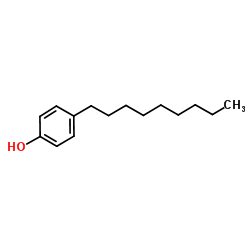
104-40-5 |
| Literature: Corti, A.; Frassinetti, S.; Vallini, G.; D'Antone, S.; Fichi, C.; Solaro, R. Environmental Pollution (Amsterdam, Netherlands), 1995 , vol. 90, # 1 p. 83 - 88 |
|
~% 
104-40-5 |
| Literature: WO2004/54954 A1, ; Page 14 ; |
|
~% 
104-40-5 |
| Literature: Chemical and Pharmaceutical Bulletin, , vol. 37, # 6 p. 1619 - 1621 |
|
~% 
104-40-5 |
| Literature: Chemical and Pharmaceutical Bulletin, , vol. 37, # 6 p. 1619 - 1621 |
|
~99% 
104-40-5 |
| Literature: Ohsawa; Hatano; Kayoh; Kotabe; Oishi Tetrahedron Letters, 1992 , vol. 33, # 38 p. 5555 - 5558 |
|
~% 
104-40-5 |
| Literature: Journal fuer Praktische Chemie (Leipzig), , vol. 331, # 4 p. 617 - 630 |
|
~% 
104-40-5 |
| Literature: Environmental Pollution (Amsterdam, Netherlands), , vol. 90, # 1 p. 83 - 88 |
|
~% 
104-40-5 |
| Literature: Xenobiotica, , vol. 28, # 8 p. 745 - 757 |
| Precursor 8 | |
|---|---|
| DownStream 10 | |
| HS Code | 2907131000 |
|---|---|
| Summary | 2907131000 4-nonylphenol。supervision conditions:x(environment control release notice for poisonous chemicals)。VAT:17.0%。tax rebate rate:9.0%。MFN tarrif:5.5%。general tariff:30.0% |



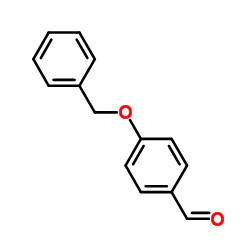
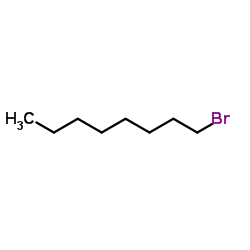
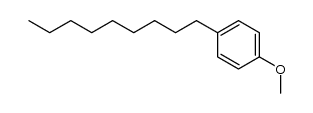
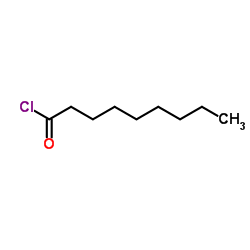
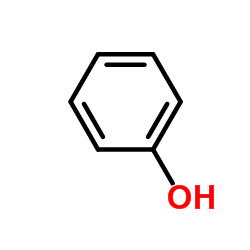

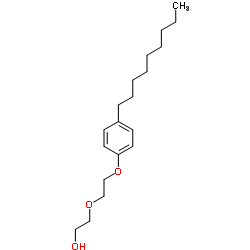

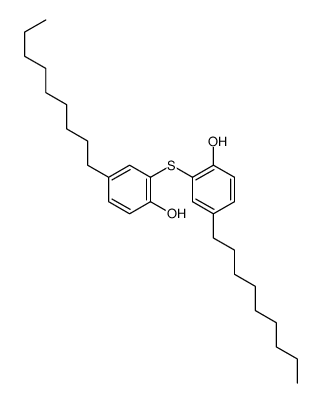
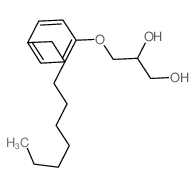

![6-[1-(hydroxyamino)ethylidene]-4-nonylcyclohexa-2,4-dien-1-one structure](https://www.chemsrc.com/caspic/124/93913-80-5.png)
![6-[(hydroxyamino)-phenylmethylidene]-4-nonylcyclohexa-2,4-dien-1-one structure](https://www.chemsrc.com/caspic/356/59986-54-8.png)
